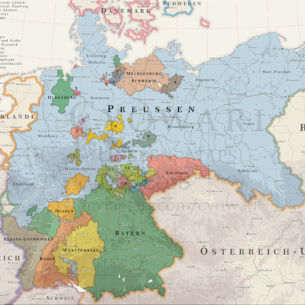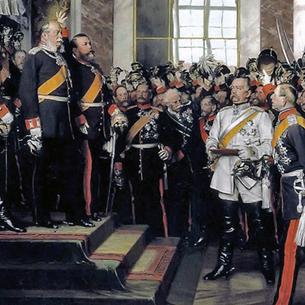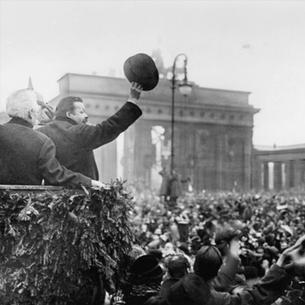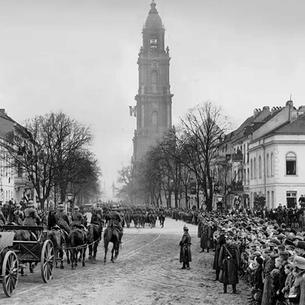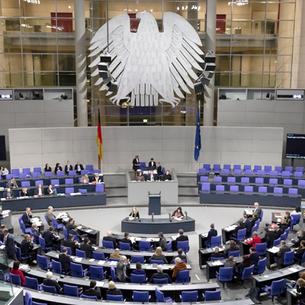Value of German coins
Total added coins: 5490
Which German coins are worth money?


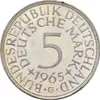
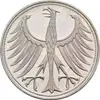


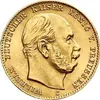
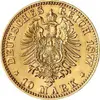




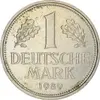
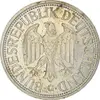


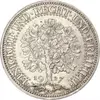
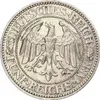
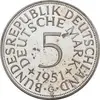
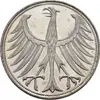


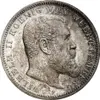
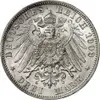
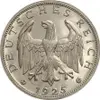




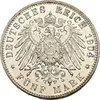
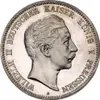

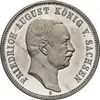




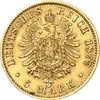
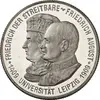
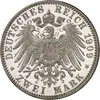
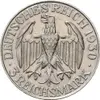

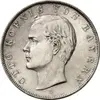

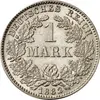
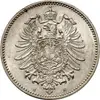














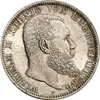
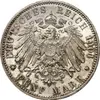


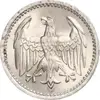
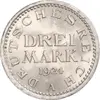
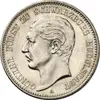
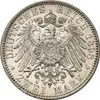
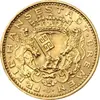
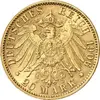



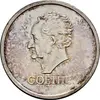
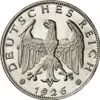
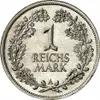
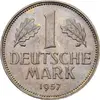



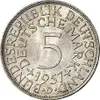
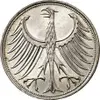
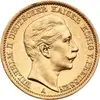
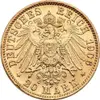
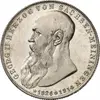



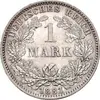
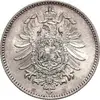
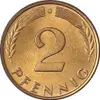
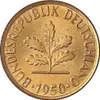


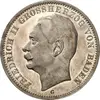
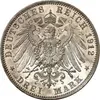


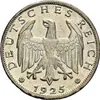

German coinage from 1871 to 2001
Historical review
This period is chronologically divided as follows:
— German Empire from 1871 to 1918;
— Weimar Republic from 1918 to 1933;
— German Democratic Republic from 1949 to 1990;
— Federal Republic of Germany from 1949 to 2001.
The historical period of the Third Reich from 1933 to 1945 is marked by far-reaching and tragic events that have cost millions of lives. In order to pay respect for the victims and to avoid possible emotional distress, we have decided not to dwell on the history of the Third Reich from 1933 to 1945.
The German Empire from 1871 to 1918
After the Franco-Prussian War won in 1871 by the German military union led by Prussia, a German nation-state — the German Empire — was founded for the first time.
The emperors were also kings of Prussia:
— Wilhelm I (1871-1888)
— Frederick III (1888)
— Wilhelm II (1888-1918)
It was Wilhelm II who shaped the fate of the new empire for a long time. He was known as a cocky and arrogant person. Germany rose to become a major economic and military power. In 1914, Austrian archduke Franz Ferdinand and his wife were assassinated in Sarajevo, and the First World War broke out. A complicated system of alliances quickly turned this conflict into a continental war — the first war involving modern weapons of mass destruction and causing millions of victims.
Germany surrendered in 1918. The end of the war had profound consequences: four monarchies ceased to exist, new sovereign states appeared, and the USA grew into a world power. Germany had to deal with the tough peace conditions. The emperor abdicated and Germany turned into a republic.
Coins of the German Empire
With the founding of the first German nation-state, the mark was introduced to become the standardized currency of the empire. Various older German currencies were gradually put out of circulation. The frontside of coins usually depicted the respective rulers or, in the case of cities, the coat of arms. The backside showed the Imperial Eagle. In addition to small coins denominated in 1, 2, 5, 10, 20, 25, 50 pfennigs and half mark, 1-, 2-, 3- and 5-marks coins were also minted. It is noteworthy that the 20-pfennigs (partially) and coins from 50 pfennigs to 5 marks were made of .900 silver. Golden coins of 5, 10 and 20 marks with a fineness of 900/1000 also came into circulation.
There was a scarcity of materials during the First World War and thus silver coins were minted in quite small quantities. These coins are now valuable numismatic treasures. Perhaps due to their wide variety, historical provenance and high minting quality, coins of the German Empire are highly popular among collectors. Last but not least, there is a big community of collectors who contribute to information exchange and trade.
1918–1933: the Weimar Republic
The end of the First World War was followed by great restlessness and abdication of the emperor in Germany. In 1918, the republic was proclaimed. Shortly after, a hyperinflation broke out. Prices turned to have astronomic values. The introduction of the rentenmark allowed to bring the inflation under control. The period of certain stability was followed by another catastrophic event: a stock market crash on the New York Stock Exchange, widely known as the Black Friday. Germany particularly badly suffered from its consequences: mass unemployment, deflation, waves of bankruptcies, social destitution and political crises. Left- and right-wing radical powers fought each other in street battles and political assassinations were the order of the day. The national socialists had great electoral successes and took over the power in 1933.
Coins of the Weimar Republic
The first coins — 50 pfennigs (1919-1922) and 3 marks (1922) — soon became worthless due to high inflation. In 1923, the nominal value was thus increased to 200 and 500 marks. Nevertheless, the inflation again acted faster than coin presses. The battle against the inflation was won only when the rentenmark was introduced and, a year later, it was converted into the reichsmark.
Coinage consisted of coins with the value of 1, 2, 5, 10, 50 pfennigs and 1, 2, 3 and 5 marks. Marks had the fineness of 500/1000. A particular attention is deserved by the series of commemorative 3- and 5-marks coins that are highly popular among collectors. Due to mainly small mintages and so-far moderate prices, experts believe them to be underrated and underline that they still have the potential to increase in value.
The German Democratic Republic (1949-1990)
In 1949, the German Democratic Republic (GDR) came to exist in the territory occupied by the Soviet Union in Eastern Germany. It was a socialist state ideologically based on Marxism-Leninism. A non-democratic system coupled with planned economy led to abnormal supply shortages, mass discontent and mass migration. Nothing could stop this but hermetic closure of the western border. As a result, the GDR constructed the Berlin Wall in 1961. Inspired by reformists in the Soviet Union, the GDR population became more and more critical. Mass demonstrations and waves of departures were the result. In the end, the GDR regime had to surrender and the wall peacefully fell. The German reunification finally took place in 1990.
Coins in the GDR
After the currency reform was carried out in the GDR, coins were mainly minted in cheap aluminum. Those coins were denominated in 1, 5, 10, 20, 50 pfennigs, as well as 1 and 2 marks. In addition, there were coins minted in copper alloy: 50 pfennigs in 1949 and 1950 and 20 pfennigs in 1969 and 1971. Those coins were intended for everyday payments. There were also a variety of commemorative coins with the value of 5, 10 and 20 marks. Some of them were made of the so-called Neusilber, or German silver (copper alloy with nickel), others — of silver. Silver coins were issued to be exported to collectors in the West and constituted an important source of foreign exchange revenues for the GDR. These collecting items are highly popular worldwide. Some issues of 10- and 20-marks commemorative silver coins, especially with proof cover, are quite rare and thus valuable.
The Federal Republic of Germany (1949-2001)
In 1949, the Western Trizone became the Federal Republic of Germany as a counterbalance to the GDR. The economy in the GDR stagnated while the FRG economy quickly recovered. This was thanks to the free-market economy and the U.S. Marshall Plan. In the early 1960s, full employment was reached in the Federal Republic of Germany. In 1955, the FRG joined NATO and later, in 1957, European Economic Community (the EU predecessor). The construction of the Berlin Wall intensified the Cold War. It was only in the early 1970s when tensions decreased in some way due to new policies toward the East implemented by the FRG. In the mid-1980s, critical voices in the GDR grew louder. There were mass demonstrations and waves of migration. In the end, the GDR regime had to give in and the Berlin Wall peacefully fell. The reunification with the Federal Republic of Germany took place in 1990.
The initial euphoria passed quickly. The transition from the planned economy to a free-market one and complicated property issues revealed huge problems to solve. The differences between Western and Eastern Germany still persist.
Coins in the FRG
Just like its eastern sister, the FRG also carried out a monetary reform. 1, 2, 5, 10, 50 pfennigs and 1, 2 and 5 marks were issued. In 1948 and 1949, pfennigs had a legend «BANK DEUTSCHER LÄNDER», i.e., «Bank of German States» and, starting from 1950, the legend on all coins depicted the inscription «BUNDESREPUBLIK DEUTSCHLAND», i.e., «FEDERAL REPUBLIC OF GERMANY». The 5-marks coin was made of .625 silver (till 1974).
The FRG also minted a large number of commemorative coins, mainly made of silver. Due to extensive mintage, commemorative coins did not achieve any significant increases in value till 2001. The first four issues minted between 1952 and 1957 are the exception to this (National Museum, Schiller, Markgraf von Baden and Eichendorff). However, there are various rare and valuable items among coins that were in regular circulation.
Coins of the FRG are often collected. This is due to the fact there are many collectors among 80 million population in Germany, but it is also due to the fact that many coins are affordable.
On January 1, 2002, the euro was introduced. To pay respects and say symbolic goodbye to the German mark, a golden 1-mark coin was issued in 2001. It is made of pure gold (999.9/1000) and has five different mintmarks: A, D, F, G, J.
Heinrich Hegen
